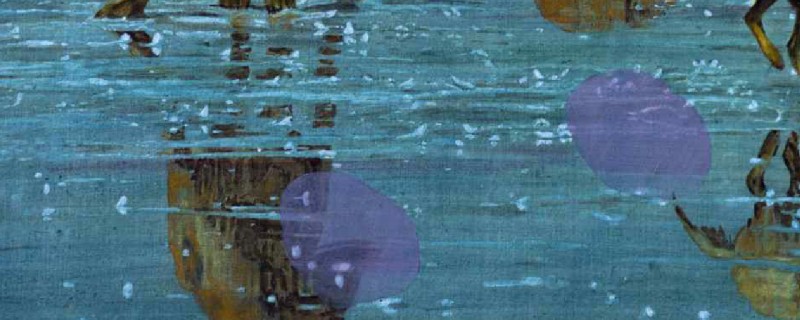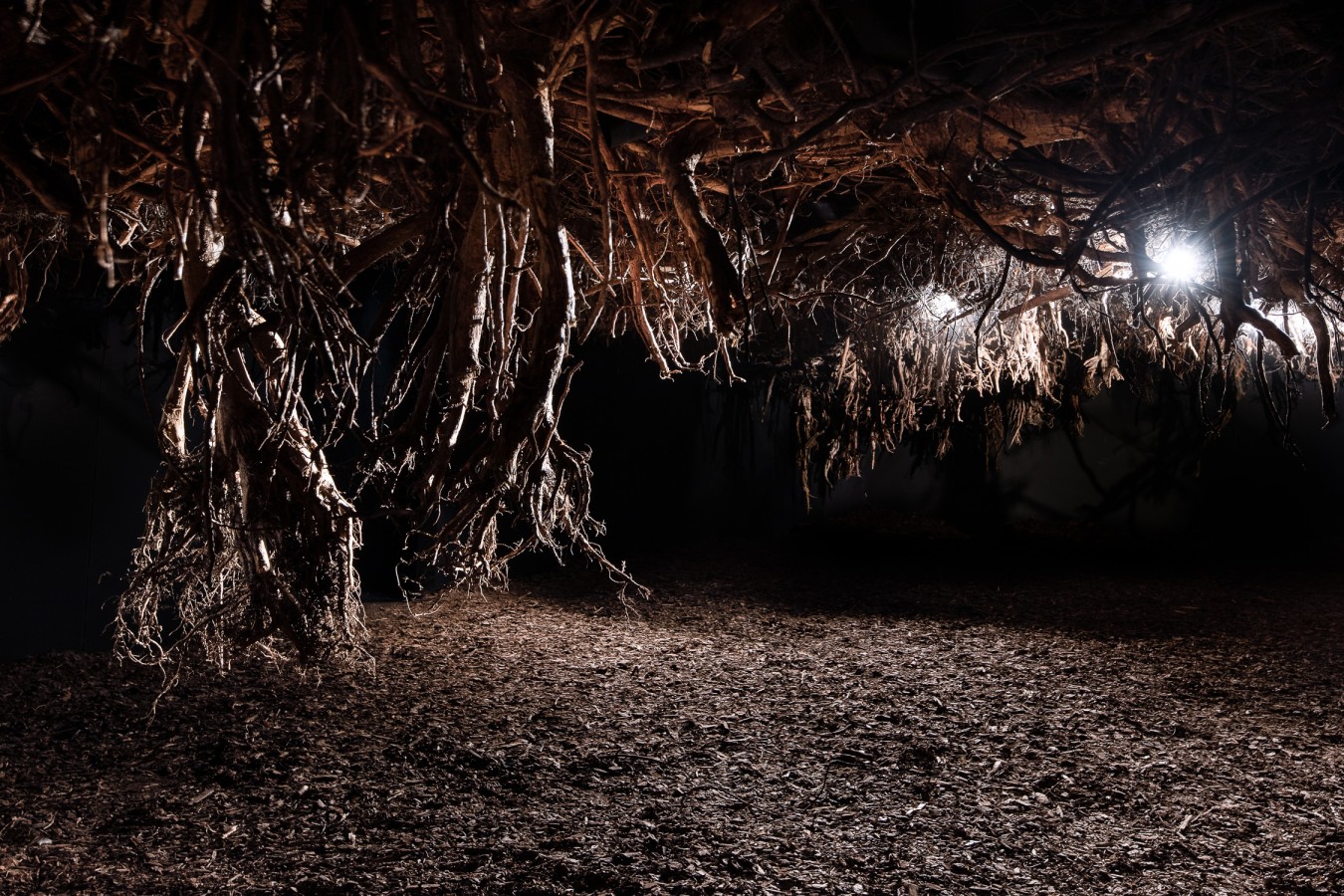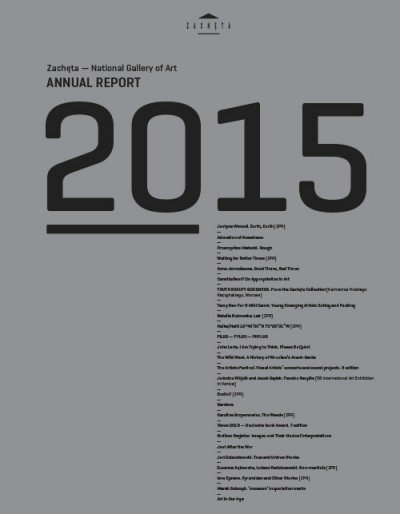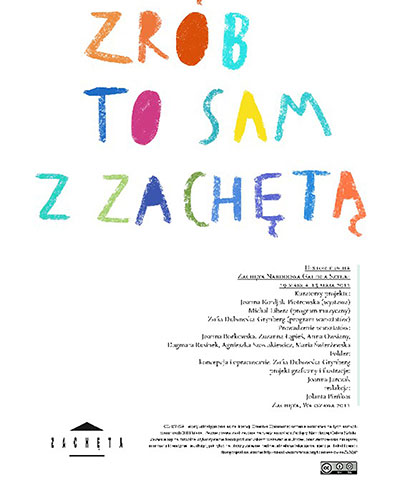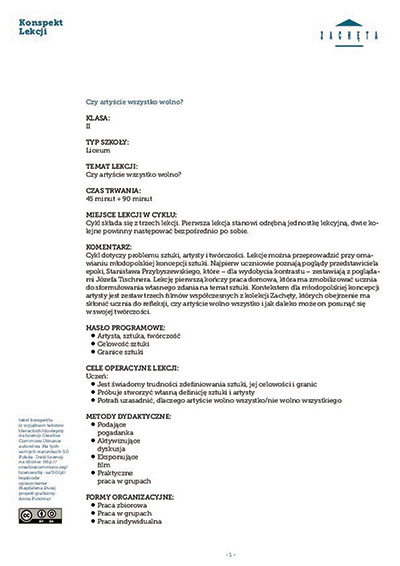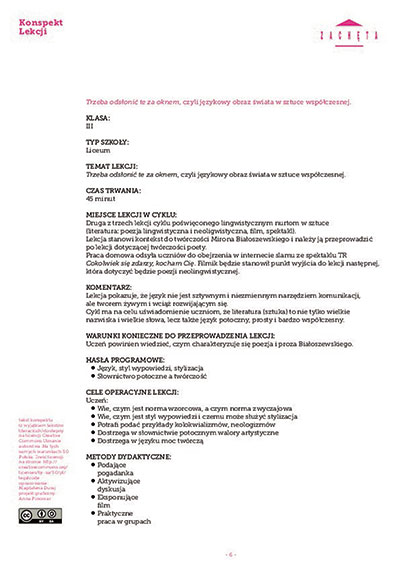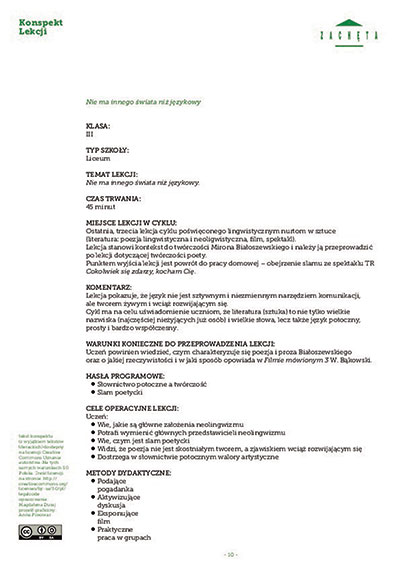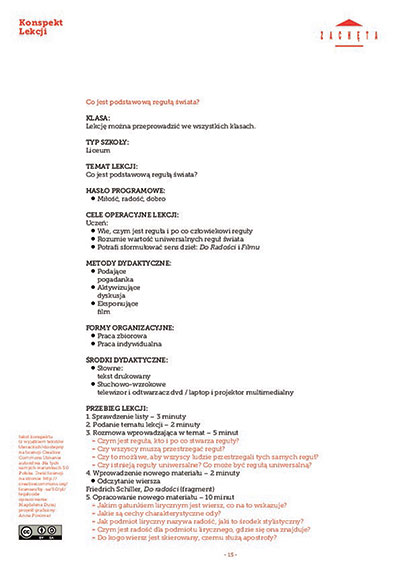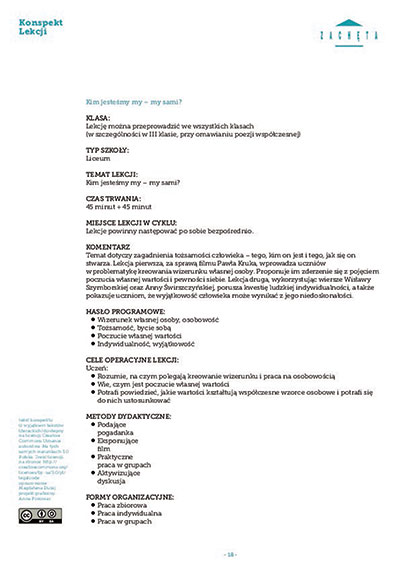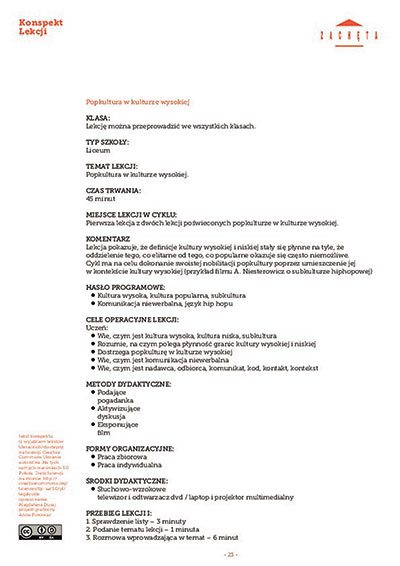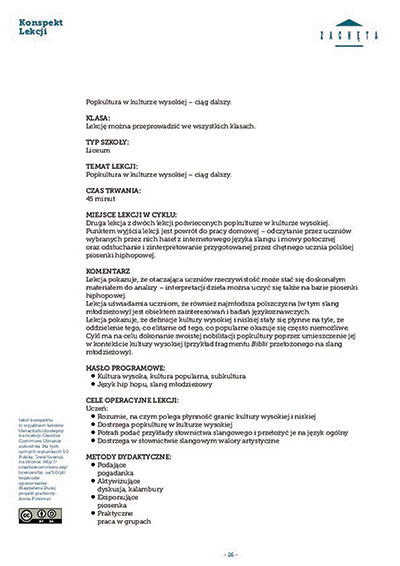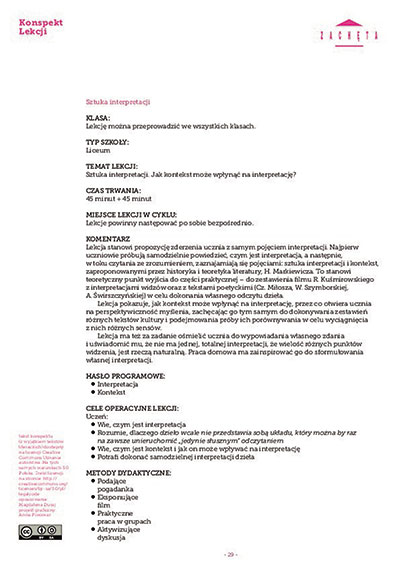Publikacja udostępniana jest na licencji Creative Commons.
Publication date: 01.02.2021
Everything counts. Everything is ferment, that works.
Nelly Sachs1
Sanctuarization can only ever be mutual.
Achille Mbembe2
[T]he boundary is in the juxtaposition of this image of another world to that place where it has appeared, primordially alien and newly arrived in this landscape. Where one ends, the other immediately emerges . . . it is their fate in any total installation to be together forever.
Ilya Kabakov3
How could it be that I’m from this Earth, yet trees are also from this Earth?
Valzhyna Mort4
Organize at your weakest points. Do not retreat into your strengths.
Zeyno Pekünlü5
1
If I were with you standing in the Zachęta — National Gallery of Art, visiting Rhizopolis, if not for the pandemic, if not for my great-grandmother Sara bat Moshe's eviction from Warsaw (and because of it), I would squat like you in the darkness, under a shock of roots, writing in the margins of a book — probably Belarusian poet Valzhyna Mort’s Music for the Dead and Resurrected or my very worn copy of Joanna Rajkowska’s Where the Beast is Buried. I would write differently than I will write now, and it is this impossible, unwritten text I would rather you to read. I believe I am more than compromised writing this outside of Rhizopolis. I believe in writing about such an entity within its material presence, as a participator, as one of its many instruments. So allow me to sever the city of Rhizopolis from Rhizopolis and begin to write up against this severance, from within Rhizopolis, where what the writing wanted becomes solely possible as latent matter, pure potentiality in the literal root cellar of the imagination in ecological duress. Now, I find myself with you, broken up and masked. Simply a precious vessel, a stomach with splashes of hunger, a tinge between caresses, the date on a disturbing scripture, I find us orienting our capacities and vulnerabilities, denizens of Rhizopolis, beneath a devastated Warsaw forest détourned.
2
Rhizopolis the exhibition is an echo or a source of Rhizopolis the city. We cannot know which. Rhizopolis brings tree roots, from annihilated forests surrounding the city of Warsaw (and so surrounding Rhizopolis), to the people of Rhizopolis. Rhizopolis is a city. A city in the future, dark, nourishing, an urban nest; a sunless refuge for exiles from anthropogenic catastrophe, its mass migrations of human and nonhuman collectives, extreme erratic weather, climate apartheid and climate genocide. Rhizopolis is a city in your imagination. Rhizopolis is a potentiality in your imagination and we should say of your imagination in so far as what we can imagine is highly political and interdependent. There in itself, Rhizopolis as figment, as the political conditions of your imagination, is the fruit of your worry. You worry about yourselves, about your children, about your grandchildren and so on, as do I and everyone I know, because the racist and blood-soaked promise of modernity stalls, because power murders our future in exchange for capital and mass anxiety. In the city of Rhizopolis, the tree roots from the logging fields of Warsaw are alive and constitute the regenerative sustenance of a new homeland; breathing, feeding, changing, speaking, transferring the sun — the sun you might not remember any more but gnaw at and swallow in subarboreal mediation.
3
Before conceiving Rhizopolis, three years ago, millions of trees were torn up throughout Poland. Rajkowska constructed a wall with 22 tree roots, collected from the logging fields, where dead trees are mounded in immense gestures. Struck into each other, entangled, and pressed into six joined columns, she erected I Shall Not Enter into Your Heaven (2017) in the open air of Lublin, in mourning, contestation, and pessimism. ‘This wall is formed from the organs of plants that usually remain invisible beneath the surface of the earth. However, these were, quite literally, torn out . . . Many women (having a particular somatic sensitivity) have reported that this felt as if a violent physical act had been committed against them, as if someone had cut off their legs or hit them.’6
Rajkowska’s motivation here emerges from a traumatic historiography of women that Sylvia Federici in particular has narrated through the archives of so-called witch hunts. Federici outlines three centuries of a violent reconstitution of lower class women; a necessary means in constructing the radically different social, domestic, and labour conditions of capitalism. The process centrally targeted their everyday relations to the earth as an intimate, agential being and system of beings. While most institutions and scholars, like the Anna Göldi Museum in Ennenda, Glarus (Switzerland), exclusively situate the legacy of witch hunts in the exceptional result of irrational social forces eventually transformed in the West by enlightened progress — and thereby continue to perpetuate outside it and inside its dark ghettos — Federici evidences a global catastrophe constitutive of modernity, where femicide becomes a primary means of commodifying the nonhuman. Extractive corporations and the World Bank, supported by national militaries and local police, continue to dispense the violent stigmatization and eradication of women who refuse capitalist notions of wealth, of security, and of the future; women all over the global south ‘who refuse[s] to sell the land, who refuse[s] to sell the trees . . .’.7 I Shall Not Enter into Your Heaven and Rhizopolis witness the perpetuity of this violence in Poland, where the mass destruction of trees breeds pain in the bodies of insomniac women whose ancestors were forced to negate the trajectory of this very relation. After constructing I Shall Not Enter into Your Heaven,Rajkowska continued to photograph and salvage dead tree roots, eventually solely around Warsaw where she lives with her family. In this manner, Rhizopolis and Rhizopolis have come to exist amidst the ongoing mass uprising of women throughout Poland demanding political revolution, bodily autonomy, and a future for the planet. Where I Shall Not Enter into Your Heaven emerged in painful pessimism and a humble gift to all the birds that built nests in it, Rhizopolis transmits these qualities into an imagined remedy for human life.
4
But now I think Rhizopolis, the imagined city, is the echo and Rhizopolis, the exhibition, is the source, for Rajkowska’s labour ultimately begins in witnessing and handling the dead tree roots of Warsaw — indeed they arenot alive but dead. She wants us, perhaps foremost, to be in proximity to these tree roots, to be with them. Rajkowska believes something will happen to us when we encounter the roots of these annihilated trees directly, with our bodies, and in this era. And from the effect of this proximity, Rhizopolis appears. Passing from the delta of Rhizopolis to the echoes of Rhizopolis, we are presented with a core tension. The roots’ deadness takes us vicariously into the real polis of Warsaw from which such deadness materially emanates, while the imagined city of Rhizopolis takes us into a future of ecological catastrophe — a future much more inclined to our reality than world powers communicate — by way of a spectral utopia. These poles, a kind of translocal convergence of real wounds, perform a dark beauty, and this is the sensation of our bind. This is the quality of its scenography, as Rajkowska calls it, within which those people in Rhizopolis participate by way of the surveillance footage, their live actions projected into an annexed cinema from cameras installed among the dead roots. In Rhizopolis, the tree roots offer a critique of power — including of local ordinances enforcing the clearing of trees to maintain property value — by asserting the situation we are in, in respect to the planetary collapse that will come, that is coming, if power remains consolidating, coring, precarizing, and exterminating. I write this three weeks after the stock market introduced water as a tradable commodity, a stock market that has exponentially enriched itself to ‘record levels’ during a devastating global pandemic that promises to make the world tremendously poorer, sicker, hungrier, and more distrustful.It has been written of Rajkowska’s previous works that ‘as a woman and a mother, she uses her own body, a biological machine, to sense and understand the conditions of her work where “[d]isease, weakness and malfunction” provide ‘a fertile ground of potentiality rather than failure’8. I think Rhizopolis is a specific movement of visceral and conceptual exchange, between living bodies, reverting from the weak and sick potentiality of Rajkowska’s body — as one of the many women’s bodies mentioned above in vicarious affliction — into a speculative, urban form. If Rhizopolisis a city, it is, like her body, a biological machine, ‘whose extensive root systems made it possible to create caves where [the] survivors . . .breathe and nourish themselves . . .’.9
5
Human catastrophe implicates nonhuman refuge. I think of the 50,000 fugitive enslaved Africans and indigenous Americans living on islands deep, deep inside the Great Dismal Swamp over two hundred years, protected by the swamp’s inhospitality to racial capitalism. I think of the US-backed Pinochet dictatorship’s mass disappearance of political dissidents, of their bodies sometimes disposed from airplanes piercing the vast Atacama Desert. I think of the poet Raùl Zurita writing ‘ni pena ni miedo’(no shame no fear) into the desert earth at such a scale that its words might only be read from the sky. ‘I come from a country and a continent in which there are thousands of people that did not feel any compassion if not for the landscape . . . That is because they were thrown out of airplanes by the dictatorship.’10 Nelly Richards calls this piece ‘an infinity of representation’,11 andits infinity, I think, is in its translating the desert’s politically incomprehensible service back into the brutal territory of human speech. I think of a story Dori Midnight told Rajkowska and I, when we interviewed her in preparing our project Night Herons (2020); a story which must reverberate with stories many of you or your families, perhaps in secret, know intimately.
A man Dori heard speak, a Polish Jew, survived der Khurbn as a child living inside a birch tree in a forest. Upon returning to Europe, for the first and last time, since he had sought refuge elsewhere, this now grown man only wished to visit this tree which had protected him as a boy — nothing else. These situations are precedent to Rhizopolis. They coat or cut or are its roots in the winter of our dreadful uncertainty, before, during, and after our uprisings. C.L.R. James : ‘These are my ancestors, these are my people. They are yours too if you want them.’12
6
Earlier, I called Rhizopolis ‘a new homeland’, but Rhizopolis is not a homeland. It might be home, but it is not a homeland. Indeed, Rhizopolis, as emergent from what you experience inside Rhizopolis,is one of so, so many that it cannot, I think, be territorialized into any singularity. Its very name disperses its conditions of nourishment, inhabitation, solidarity, and above all of refuge and of mystery. If there is one Rhizopolis, there are many. Standing in Rhizopolis, you might feel the presence of an entire transspecies political system — though it is not constructed or narrated for you in the exhibition — in which the unitary conditions of trust literally gnaw and suck at and tend to the roots of a vast, cosmopolitan set of others; experience, and stories, fears and plans, history and protest transmitted between languages utterly incomprehensible and undoubtedly urgent to one another.
7
Thirteen years ago, when Rajkowska dug a pond in Grzybowski Square and filled it with lovely fish and oxygen-spewing spouts at the tumour-ridden edge of the former Jewish ghetto, a journalist from Gazeta Wyborcza asked her bluntly, ‘Warsaw is full of traumatic places. Should we set up ponds in all of them?’ Rajkowska averted the literal question and explained that the ‘blocks’ of the city should be ‘cut through to make corridors and open the old routes . . . [to] make it possible to feel the organism of the city, because the city is a bloodstream.’ Where Oxygenator (2007) digs into the lived-upon burial ground of a hyperlocal catastrophe — the genocide of a population, the destruction of a city — and gives to it prosthetic breath, Rhizopolis brings impending planetary catastrophe underground into a potential urbanism, this time also in prosthetic form, because unlike the former, this project is impossible and unreal. Its potential is anticipatory. Though, Oxygenator too, became impossible, temporary, replaced by gentrifiers’ benign appropriation of the structure. ‘And do you think this is a monument?’ — Rajkowska walked around asking the elderly Varsovians, punks, and school kids resting at the pond.‘Madame, this might be a sacred place, but a monument . . . [a] monument is permanent...’, one responded13.
Where Oxygenator appears to open up, and Rhizopolis appears to bury, the former actually encloses its residents (again), so as to heal and expand a new will inside the ghetto. This re-enclosure is a mere model, an intervention, for opening up Warsaw’s bloodstream, averting the explicit language of memory for collective rest and horizontal advocacy. Yet Rhizopolis propels us out, centrifugally, from the solitary political conditions of each alienated imagination to the real arboreal forces in Warsaw. Both projects collect us from our catastrophic arc. And yet, standing in Rhizopolis or Rhizopolis, under universal annihilation, we have to ask a different question.
Robert Yerachmiel Sniderman (b. 1986, Philadelphia) is a poet, artist, and dramatist whose recent works include the durational site contemplation Lost in Jüdischer Friedhof Weißensee (2018) and its resultant intervention series Counter-Ruin (2018), the marionette film Night Herons (2020) co-authored with Polish artist Joanna Rajkowska, and a listening procession بيان الصعود إلى السماء Flight Manifesto (in-progress) with Palestinian sound artist Dirar Kalash. He is an editor at the Jewish arts and politics journal Protocols and a PhD student at the School for the Contemporary Arts in Vancouver.
1 Cf. Paul Celan. Memory Rose into Threshold Speech: The Collected Earlier Poetry, trans. Pierre Joris, New York: Farrar, Straus and Giroux, 2020.
2 Achille Mbembe, Necropolitics, trans. Steve Corcoran, Durham and London: Duke University Press, 2019.
3 Ilya Kabakov, On the ‘Total’ Installation, Berlin: Hatje Cantz Verlag, 1995.
4 Valyzhyna Mort, Music for the Dead and Resurrected, New York: Farrar Straus Giroux, 2020.
5 See artmuseum.pl/en/doc/video-od-internacjonalizmu-do-alterglobalizmu, accessed: 10 February 2021.
6 See rajkowska.com/en/i-shall-not-enter-into-your-heaven/, accessed: 10 February 2021.
7 Silvia Federici, ‘Violence Against Women and the New Forms of Capitalist Accumulation’, International Cultural Studies Program, University of Hawaii at Manoa, 13 March 2017, lecture.
8 See rajkowska.com/en/bio/, dostęp: 10.02.2021.
9 See rajkowska.com/en/rhizopolis/, accessed: 10 February 2021.
10 See poetryfoundation.org/podcasts/76153/raul-zurita-international-poets-in-conversation, accessed: 10 February 2021.
11 Nelly Richard, The Insubordination of Signs: Political Change, Cultural Transformation, and Poetics of the Crisis, Durham: Duke University Press, 2004.
12 My understanding of C.L.R James’ statement derives from Houria Bouteldja’s book, Whites, Jews, and Us: Toward a Politics of Revolutionary Love (Semiotext(e) 2017), discussed here as well: lareviewofbooks.org/article/liberation-utopias-houria-bouteldja-on-feminism-anti-semitism-and-the-politics-of-decolonization/, accessed: 10 February 2021.
13 Conversation at the Pond, 2007, Obieg, no. 1/2 (81/82), 2010, accompanying the exhibition: Joanna Rajkowska Oxygenator, Centre for Contemporary Art Ujazdowski Castle, Warsaw, curator: Kaja Pawełek.
-
01.02 – 08.08.2021Joanna RajkowskaRhizopolis
The project takes us into the world of a hypothetical future for humanity on planet Earth after the expected great catastrophe ending the current human era. In the Anthropocene, we have realised that the world has changed irreversibly, and its survival, including that of the human species, is called into question.
Zachęta – National Gallery of ArtZachęta
Thank you for your registration!
We have sent to your email address a link with a confirmation of registration.
Please click on the link in order to fully activate your account.
After registering on the service, you can add events and exhibitions that are important for you to your favourites. To your list of favourites you can also add objects from the collection, and from amongst the publications and multimedia library which we make available on our open Creative Commons licence. As a result you can download publications, books, films and many other materials.
Shortly you will be redirected to main page
